The Beginner’s Guide: Stanley Donen, Director
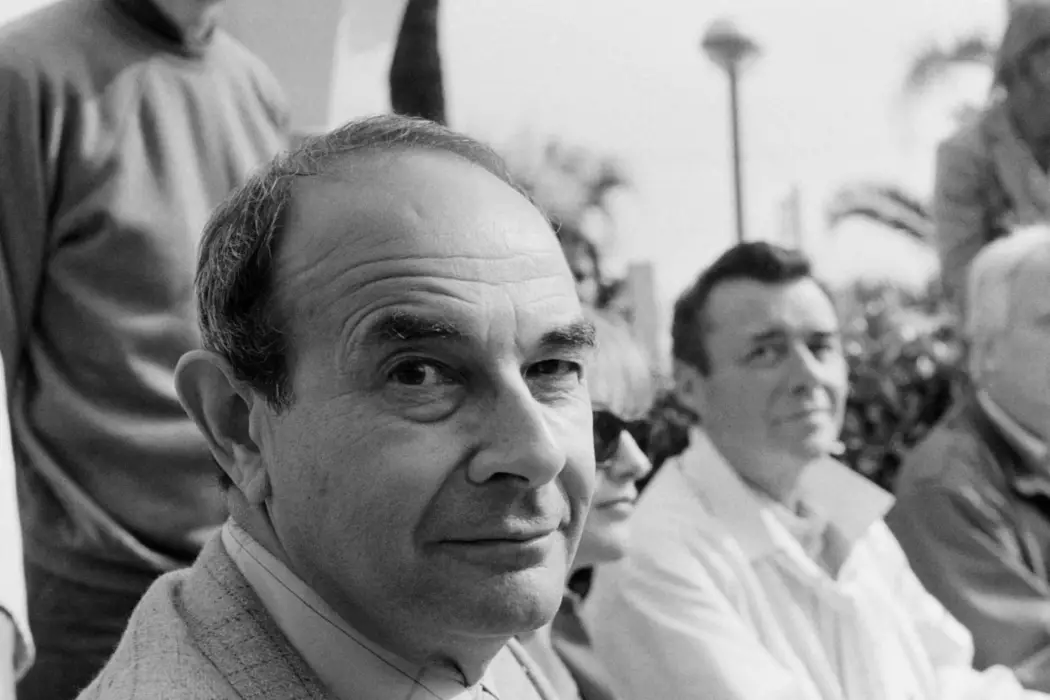
Tynan loves nagging all his friends to watch classic movies…
Upon hearing of the passing of Stanley Donen this past month there were two immediate reactions. Sadness that he is no longer with us and then subsequently, overwhelming gratitude for the movies he blessed us with. Our whole conception of a Hollywood movie musical would be radically different if not for Donen and the likes of Gene Kelly and Vincente Minnelli, among many others.
He is also, regretfully, the last remaining bastion of the directing forces behind Old Hollywood. This makes it even more imperative to acknowledge his career and consider his impact on the industry.
So if you will pardon me, this is meant to be an ode to director extraordinaire Stanley Donen and an implicit call to hold onto film history so generations to come will have the opportunity to be impacted by it. For those who’ve loved his films without knowing it and those who’ve considered him among the most underrated talents, let us come together in remembrance of a sterling career.
Early Career
If you actually dig around in Stanley Donen‘s history, his is a phenomenal story of someone who got involved in moving pictures so very young. While life can rarely be attributed to a single inciting incident, like a film, we could take a stab at it anyway. As with many of us, Mr. Donen‘s story began during childhood in the darkened confines of a movie theater.
He recalled in a 2013 interview with Vanity Fair “I saw Fred Astaire in Flying Down to Rio when I was nine years old, and it changed my life. It just seemed wonderful, and my life wasn’t wonderful. The joy of dancing to music! And Fred was so amazing, and Ginger — oh, God! Ginger!”
In the Astaire biography Dancing on the Ceiling, he reiterated, “I went back to the theatre every day while the picture was playing. I must have seen it at least 20 times. When Fred Astaire danced, everything in the world was perfect.”
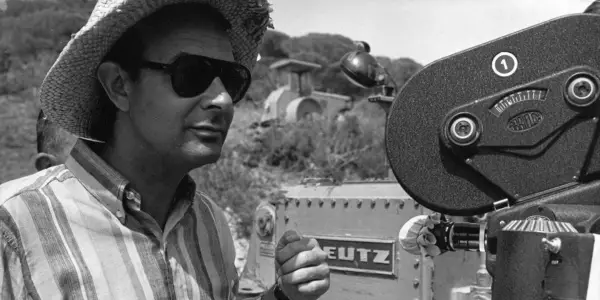
His life had been irrefutably transformed by this moviegoing experience. So in efforts to emulate his hero, a 16-year-old Donen soon found himself as an aspiring hoofer in a local dance academy. The next step was to move to New York and from there he earned himself a place in the chorus line of the Broadway production of Pal Joey. The show’s star was 28-year-old extraordinaire Gene Kelly. The seeds of something spectacular were already being planted.
Fortune was smiling down on both of them. Kelly would make the move out to Hollywood in 1942 for his movie debut opposite Judy Garland in the joyous flag-waver For Me and My Gal. Soon thereafter, Donen was brought on as a contract dancer. The two emergent talents came together with stirring results in Cover Girl, starring Kelly and Rita Hayworth. The choreography, including an inventive doppelganger dance with Kelly strutting with his mirror image, proved a portent of the future fruits of their labors together.
Anchors Aweigh (1945) would follow with Kelly topping his earlier feat by hoofing away with the animated Jerry Mouse. Donen was soon called on to assist on a slew of forgotten projects such as Holiday in Mexico (1946), No Leave, No Love (1946), This Time for Keeps (1947), Big City (1948), and A Date with Judy (1948) during the post-war years. Another musical legend, Busby Berkeley was tapped as director for Take Me Out to The Ballgame but it was Kelly and Donen who choreographed the numbers. It proved the necessary stepping stone to their first fully collaborative effort that same year, On The Town (1949).
Collaboration with Gene Kelly
Fully acknowledging how much he gained out of the collaboration, Donen asserted “Gene made it possible for me to become a director when I was in my 20s. And I went on to direct him and Fred Astaire too. Well, that’s a gift nobody else got. You have to have the luck, and you can’t do without it.”
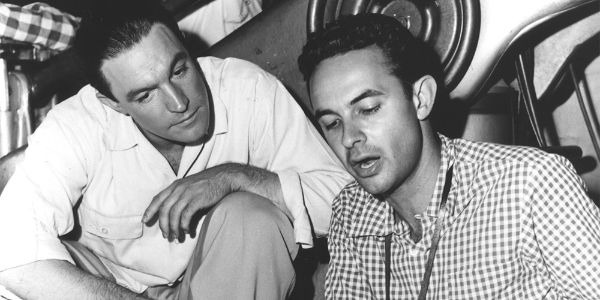
The young talent made ample use of the gift co-directing with his long-time creative collaborator by his mid-20s and becoming an established box office draw only a few years later. Unfortunately, in the end, their relationship would ultimately sour and result in a sanctimonious split.
Donen was proving himself capable on his own with numerous creative successes throughout the 1950s. Kelly could be an exacting presence on set in pursuit of perfection and egos cannot be discounted. To add insult to the injury, Kelly would end up marrying Donen‘s former wife, dancer Jeanne Coyne. Thus, the partnership was finished. What was left in its stead was a complicated relationship of mutual respect but diverging visions.
As Donen recounted to The New York Times in 1996, “Gene, as a performer, was among the wonders of the 20th century,” he said. “His agility and his talents at being what he would call a song and dance man were very winning. What I didn’t like … was his manner offscreen. He could be difficult with me and everyone else. It was always a complicated collaboration, partly because when we began he was a star and I was in the chorus. Then we became co-choreographers. It wasn’t always the happiest thing.”
His Legacy
Regardless, Donen‘s career continued well into the 60s and onward with a plethora of pictures which continually revelled in the Hollywood dream factory through romance, humor, even Hitchc*ckian-like thrills. While leaving an indelible mark on the musical, he proved the adroitness in which he was capable of taking on a diverse range of material.
Because his projects often became so varied and he was easily overshadowed by the onscreen charisma of Gene Kelly or the world-renowned coloring and mise-en-scene of his contemporary Minnelli, Donen has remained a relatively unheralded director. And yet his successes are unquestionable. One of his finest attributes was surrounding himself with highly talented artists and knowing how to see a film to completion through mutual collaboration.
If we were to collect a Donen time capsule as touchstones to memorialize his career there are no better entries than these nine films. This is an attempt to appreciate his work. Let’s enjoy his legacy together, shall we?
On The Town (1949)
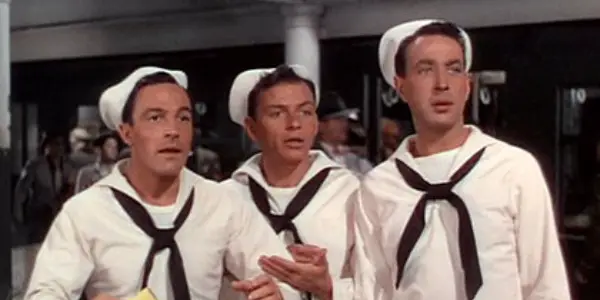
What better place to begin than that wonderful town. When Gabey (Gene Kelly), Chip (Frank Sinatra), and Ozzie (Jules Munshin) break into a chorus of “New York, New York” fresh on leave, they’re probably heard all across town. Their subsequent adventure penned by the dynamic duo of Adolph Green and Betty Comden truly is the quintessential MGM offering. Maybe I’m simply a sucker for ambling films like this where the prospects seem endless. After an initial clip show taking them all over, as well as a decent amount of on-location footage, the boys finally settle on the fact that they need to find some female companionship while they’re in the big city.
Each boy finds their perfectly color-coordinated match, including “Miss Turnstiles” (Vera-Ellen), peppy anthropologist Claire (Ann Miller), and the comical cabby Hildy (Betty Garrett) out on the prowl herself. As with all their subsequent endeavors, it’s nearly impossible to assume where one director’s influence began and the other’s ended on the production. All we have are the results which speak for themselves.
Royal Wedding (1951)
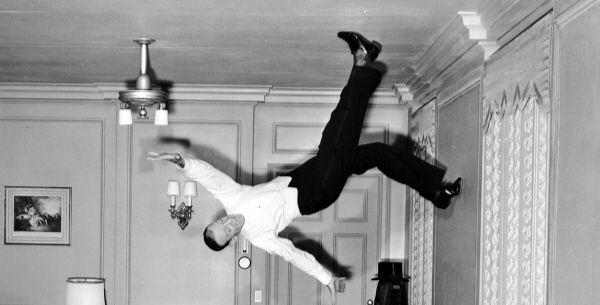
Yes, it’s the one where Fred Astaire dances on the ceiling. If that were all it was, that would be more than enough to solidify its legacy. Because Donen effectively helped to create one of the most iconic numbers of all time with his boyhood hero, superseding almost all of the elegant hoofer’s routines from an already illustrious career. Even today watching it, there’s an unequivocal suspension of disbelief. Nothing gets in the way of the experience whether tricks or cameras or technologies. We get carried up with him. It’s pure elation. It’s what the movies were made for.
With such a defining moment, some tend to forget the lightness and general amiability of his talented costar Jane Powell. In a refreshing departure, instead of lovers, they are a brother-sister duo mirroring Astaire‘s own early partnership with his sister Adele. Subsequent love interests are played adequately by Sarah Churchill and Peter Lawford, all set against the agreeable backdrop of the 1947 union of Queen Elizabeth and Prince Philip. It’s an undemanding morsel full of the magic of the 1950s movie musical. What’s more, it never tries to hide what it is. That’s part of its endearing charm.
Singin In The Rain (1952)
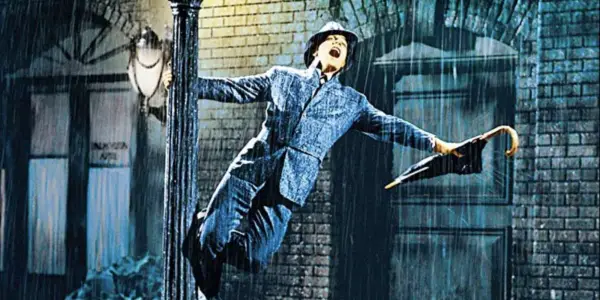
This is the film that will forever define not only Stanley Donen or Gene Kelly but the musical genre in general. It is the measure. The apex. The total expression of what the genre is capable of. And yet for all the artifice, choreography and catchy tunes from the confluence of talent including Arthur Freed and Green & Comden, it’s just a glorious experience.
It’s a love story, about a lifelong friendship, and the birth of the talking pictures phenomenon. Both the humor and the heartache. The confection and reality just behind the curtain of the dream factory. For every cringe-worthy phony like Lina Lamont (Jean Hagen), there stands another genuine talent just waiting for a chance like Kathy Seldon (Debbie Reynolds).
Don Lockwood (Kelly) and Cosmo Brown (Donald O’Connor) are the buddies who’ve been through thick and thin together. The perfect dynamic duo to take the nascent Hollywood by storm. The comedy comes in spades with “Make ‘Em Laugh” and “Moses Supposes” leading the charge with pratfalls and wordplay galore. O’Connor plays the second banana effortlessly, not unlike Donen was perceived in real life. Somehow it all comes together magically. The friends dance the whole night through with “Good Morning” and Cyd Charisse even has time to make a sultry appearance.
Best of all, by stomping through the puddles and swinging from lampposts, Gene Kelly personifies the euphoria of love like arguably no one else has ever topped on taps since. I could watch it again and again. Much like Astaire up on the ceiling, Kelly is able to take an ordinary experience and real emotions to rapturous heights. You have the ordinary becoming extraordinary.
In both cases, you have Donen‘s belief in the magic of the medium as an important component just as is the belief in the prototypical happy ending. Somehow we never begrudge Singin’ in the Rain for any of this. It’s enchanting to the nth degree. For many of us, it’s our quintessential image of the Golden Age of Hollywood.
Seven Brides for Seven Brothers (1954)
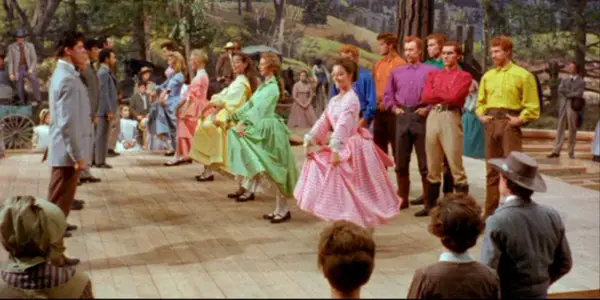
As one of Donen‘s early solo successes and a major MGM smash, Seven Brides for Seven Brothers is another mainstay of the musical genre. Howard Keel and Jane Powell offer the wonderful dual qualities of having personality but most importantly of all being true performers. They help imbue a plot that’s completely backwoods Americana with the same dash of pixie dust needed for Hollywood song and romance.
Choreographer Michael Kidd realizes, arguably, his finest hour with the extended barn-raising sequence, a textbook example of using environment and invention to create a lasting dance number. Not only that, we have the plot being progressed in the very same manner – the brothers looking to exert their dominance over their rivals, eventually on the dance floor.
It’s this impeccable melding of the very practical task full of grunt work, hammers and nails, injected with this stylized element only available in a musical format. They feed into each other beautifully. What’s more, it wouldn’t be an Ansco Color extravaganza without vibrant outfits to make everything pop with pristine acuity.
It’s Always Fair Weather (1954)
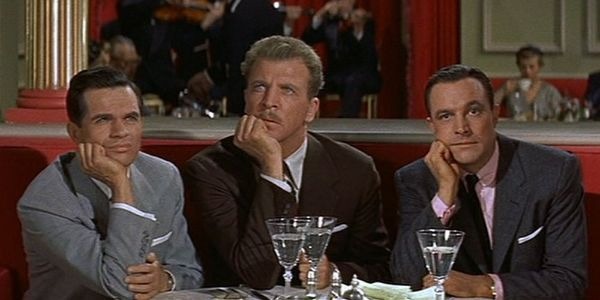
Here is a musical with a cynical streak which feels almost incongruous, like oil and water. Initially Green & Comden envisioned this project as a spiritual sequel to On The Town. They got Kelly, but with new leadership at MGM, Sinatra was out and Munshin wasn’t a big enough name. Thus, we got the underrated pair of Dan Dailey, a quality dancer in his own right, and Michael Kidd, a workhorse choreographer who blessed audiences with the aforementioned barn-raising scene in Seven Brides for Seven Brothers.
Kelly fails to have a truly singular moment until he pops on a pair of roller skates. And we know when he does that same infectiously charming shoulder shrug from Singin in the Rain that we are in for an indelible moment.
Thankfully, as a film, It’s Always Fair Weather gets better and better with every passing minute because it doesn’t ride the disillusionment all the way to the end. Even with the commercialism, advertising, corruption, and whatever else, when we get out on the other side there is a satisfaction to the denouement. By now, I’d probably follow Kelly and Cyd Charisse to the moon and back again anyway.
Still, undoubtedly, times had changed. Behind the scenes, Kelly was chafing with Donen more than ever, because the younger man had proved he could handle a picture highly successfully on his own and he was becoming more assertive. The cracks were beginning to show.
Funny Face (1957)
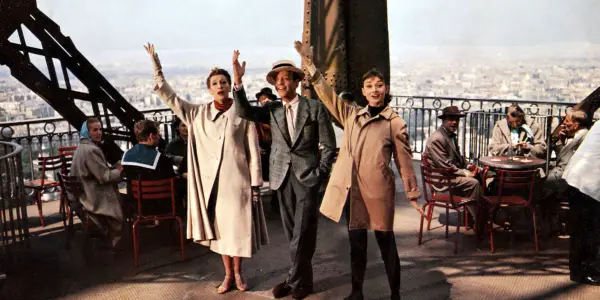
In Funny Face Fred Astaire is as affable as ever, remaining mellow with age and yet the models he has to deal with, in his line of work as a fashion photographer, are shown to be ditzy and a dime a dozen. He proposes a not-so-original concept: taking a bookkeeper, frumpy and austere, at first glance, and turning her into a starlet.
As My Fair Lady had not come out yet we can passably call Funny Face the original. Regardless, it was never much about plot. Audrey Hepburn makes for the sweetest intellectual, running the bookshop that gets overrun by a magazine syndicate on Greenwich Village, before simultaneously giving Dick Avery a touch of inspiration. It’s right there in her face.
While not the most cohesive musical out there, we have enough glimmers of fun and frivolous entertainment to more than suffice. Of course, our stars are two of the most sunshiny personalities the movies ever bore and together there’s the expected amount of good-natured cordiality. At least, in the end. Likewise, Cole Porter and the rich imagery courtesy of Stanley Donen, Richard Avedon, Technicolor et. al. make the balloons brighter and the wardrobes all the more luxuriant. A true feast for the eyes, as they say, even if the plot could be tipped over with a feather.
Indiscreet (1958)
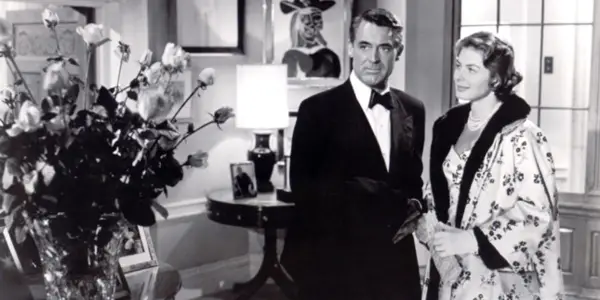
Cary Grant and Ingrid Bergman on adjacent title cards are all you should need to watch the movie. As a well-to-do, internationally acclaimed actress, she is nevertheless a woman who is dissatisfied with the men she’s been able to come across. An evening spent at a foreign dinner looks to be yet another bore. However, the stuffy ordeal all of a sudden gets a lot more swoon-worthy for everyone involved when Cary Grant walks through the front door. We’ve all but been guaranteed a pleasant evening.
Dare I say it’s all inconsequential lest you get the wrong impression? Because there’s no doubt about it. The plot is facile. The conflict thin. On the other hand, the tete-a-tetes are most agreeable. One would habit a guess without our stars the picture would be quite flat. With them, all of a sudden character and the subsequent story are given texture. Their chemistry is present before the picture begins and it exits with them after the final curtain. This is one of the keys.
Extraordinarily, Grant‘s physical prowess hasn’t atrophied, aiding him on the dance floor in Indiscreet through every step of his flailing, jumping jig. What’s more, Bergman eyeing him with an unfettered look of disdain is equally important. There’s no question it’s a defining scene in an unassuming trifle of a rom-com. This fact makes it no less diverting.
Charade (1963)
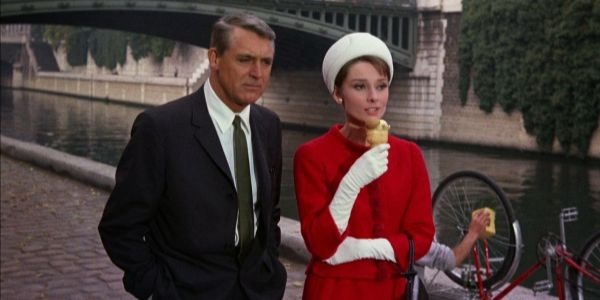
They don’t make movies like this anymore. Cary Grant and Audrey Hepburn are about as iconic as you get in a rom-com (right up there with Grant and Ingrid Bergman). However, the picture is also blessed by a stellar supporting cast including Walter Matthau, James Coburn and George Kennedy with a script by Peter Stone. It perfectly balances the thrills with lithe repartee, checking all the boxes as a featherweight delight and compelling romantic thriller. While not among the greats, it’s probably one of the most agreeable film-going experiences you could ask for and surely that speaks to something.
Because, whereas other pictures can be self-important and tedious, there is no such pretension in Charade. There are squirt guns, splattered ice creams, Punch and Judy shows, and showers fully-clothed. These moments are important just as necessary as the sincere charm and chemistry of our leads. Because with this context in place, Donen‘s homage to Hitchc*ck really holds up as quite a diverting thriller in its own right. It doesn’t scrimp on these elements. In the end, we can’t help but cite it as another ode to romantic love and the quality collaboration that all but defined Donen‘s career.
Two for The Road (1967)
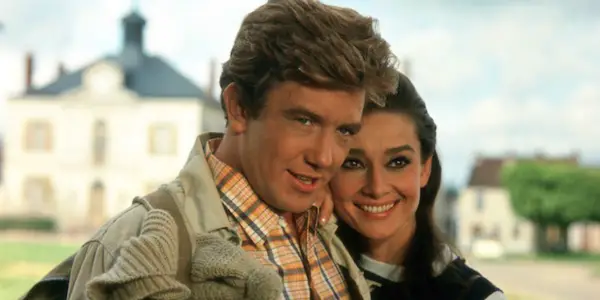
You could say Audrey Hepburn was one of the perfect expressions of Donen‘s beliefs because she was so sweet – the quintessential rom-com heroine. And yet amidst the lingering illusions of Hollywood, there is this sense of something more heartwrenching and hard. Albert Finney is a force of nature – larger than life, barrel-chested, and in many ways, the utter antithesis of Audrey. In no small way, they make the perfect couple in cinematic terms, sitting at the crossroads of the decade.
The story itself by Frederic Raphael is ambitious as it skips and jumps through a love story, a constant exercise in cuts and whip-fast transitions. In fact, you might say Two For the Road is won in the editing room even more so than most films because it builds peaks and valleys with both a frenetic pace and constantly changing snapshots of life. Henry Mancini‘s score is one of his most lastingly melancholy, striking the notes back and forth between a whirly gig warmth of summer carnivals and then the summers after when you’ve fallen out of love. The repeating strings motif continually reinforces this feeling even as he reaches out for lingering bits of nostalgia.
Have Audrey and Donen grown into a new decade? We must admit they are different, wiser, wounded even, but the great gift is how Two for The Road still leaves some space for love to exist. In the midst of a myriad of distractions and messy lives between flawed people, it really is a miracle. It is romance coming to terms with changing times and yet not quite giving up on the ideals of romantic commitment.
Conclusion
When Stanley Donen was presented with a Lifetime Achievement Award at the 1997 Oscars, he broke out in a spontaneous rendition of “Cheek to Cheek,” a standard made famous by his idol some 60 years prior. It seems a fitting capstone to a fulfilling life. It was a story of Hollywood dreams, some heartbreak, and failure, but there was never a loss of romanticism – the belief that song and dance can bring joy into our hearts and minds – taking us to magical places.
He is a testament to the fact hopes and dreams are necessary because sometimes they do come true. Dancing on the ceiling is as credible as one day meeting your heroes. Each time we watch Kelly splash around euphorically in Singin’ In The Rain or enjoy a pleasant jaunt with Cary Grant and Audrey Hepburn in Paris, we are paying homage to the last bridge to the movies of old. There’s little else to do but end with a song in honor of Mr. Donen.
Heaven, I’m in heaven and my heart beats so that I can hardly speak. And I seem to find the happiness I seek when we’re out together dancing cheek to cheek…
Also Worth Checking Out: Cover Girl, Anchors Aweigh, Take Me Out to the Ballgame, Damn Yankees, The Pajama Game, The Grass is Greener, Arabesque, and Bedazzled.
Do you think Stanley Donen is an underappreciated director? In what ways do you think he helped to define what we think of as a Hollywood Musical? Tell us your thoughts in the comments below!
Does content like this matter to you?
Become a Member and support film journalism. Unlock access to all of Film Inquiry`s great articles. Join a community of like-minded readers who are passionate about cinema - get access to our private members Network, give back to independent filmmakers, and more.
Tynan loves nagging all his friends to watch classic movies with him. Follow his frequent musings at Film Inquiry and on his blog 4 Star Films. Soli Deo Gloria.












